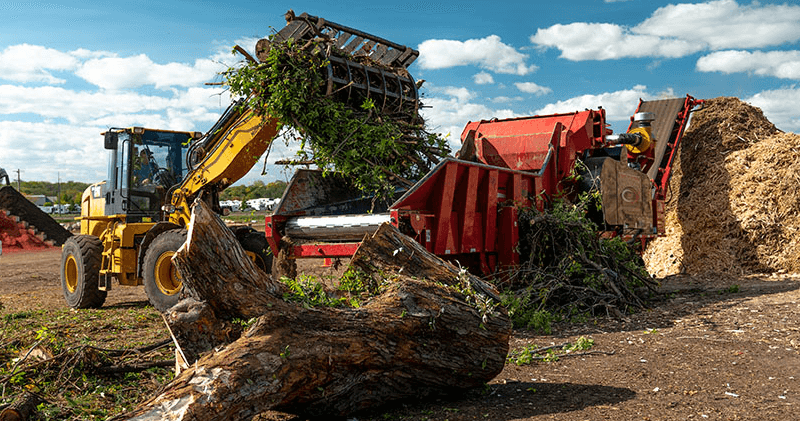How can trimming improve the health of your trees?
The Importance of Tree Trimming
You might wonder why trimming is necessary at all. After all, trees are naturally designed to grow on their own. However, trimming provides numerous health benefits that can help your trees thrive in the long run. Regularly cutting away dead or diseased branches ensures that your tree remains healthy and strong. Trimming encourages new growth, improves air circulation, and helps the tree fight off infections.
Preventing Disease and Pests
One of the most significant benefits of trimming your trees is that it helps to prevent the spread of disease and pests. Dead or dying branches are often breeding grounds for harmful insects or fungal infections. By removing these branches, you reduce the risk of these issues spreading to the rest of the tree. Healthy, trimmed trees are less likely to attract pests, which ultimately helps maintain the tree’s vitality.
Pruning to Remove Deadwood
Deadwood is one of the main culprits in tree health problems. It not only weakens the tree but also makes it more vulnerable to diseases. By pruning away dead branches, you ensure that the tree’s energy is focused on healthy growth rather than trying to sustain unhealthy parts. This also makes the tree more structurally sound and less prone to damage during storms or high winds.
Encouraging New Growth
Trimming can stimulate new growth by encouraging the tree to focus on its healthier, stronger branches. Cutting back branches that are too long or growing in undesirable directions allows the tree to direct its energy toward producing new shoots and leaves. This results in a fuller, more vibrant tree. Regular trimming can also improve the overall shape and structure of the tree, which can be especially important if you have ornamental trees in your yard.
How Trimming Stimulates Growth
When you trim a tree, you are essentially creating space for it to grow more efficiently. By removing overcrowded or poorly placed branches, you give the tree more room for light and air, which are necessary for photosynthesis. This helps the tree produce more energy, which it can then use to generate new growth. It also encourages the tree to grow stronger branches, which will support future growth and development.
Improving Air Circulation and Sunlight Exposure
Trimming can improve the airflow around the tree, which is crucial for maintaining a healthy environment. Proper air circulation helps prevent mold and mildew from developing on the branches, which could otherwise cause decay. In addition, trimming allows more sunlight to reach the inner branches of the tree. Sunlight is a key factor in the tree’s ability to produce food, so ensuring that it is evenly distributed across the tree can boost overall health.
The Role of Proper Spacing
When branches are too close together, they block each other from getting the sunlight they need. By trimming away excess branches, you create better spacing between them, allowing for maximum sunlight exposure. This also helps to avoid overcrowding, which can cause stress on the tree. When trees have access to both air and light, they can photosynthesize more efficiently, contributing to their overall health.
Strengthening the Tree’s Structure
Trimming isn’t just about removing deadwood or promoting growth; it also plays a role in the overall structure of the tree. By strategically removing weaker branches, you can improve the tree’s balance and prevent branches from growing too heavy or too far out. This helps the tree grow in a stable, upright direction, which makes it less likely to suffer from breakage or leaning. Strong structural integrity also makes your tree more resilient to harsh weather conditions.
Avoiding Branch Overload
If a tree’s branches grow too heavy, they may snap or break under the pressure. Regular trimming ensures that branches are not overloaded with too much weight. By removing excess branches and properly shaping the tree, you help prevent unnecessary stress on the trunk and remaining branches. This strengthens the tree’s overall structure and reduces the likelihood of damage.
Trimming for Aesthetic Appeal
While trimming has several health benefits, it also improves the aesthetic value of your tree. A well-trimmed tree looks more attractive and can add to the overall beauty of your garden or yard. Whether you have decorative trees or just want your landscaping to look its best, trimming can help you achieve that polished, well-kept appearance.
The Right Shape for Your Tree
Some trees, especially ornamental ones, require trimming to maintain their desired shape. Regular trimming helps to ensure that the tree’s form remains neat and tidy. This also helps prevent the tree from becoming too dense, which could affect its ability to grow properly. A properly shaped tree can make a significant difference in the overall look of your landscape.
Preventing Overgrowth
Trimming your trees also prevents overgrowth, which can lead to problems such as obstructed views, encroachment on nearby structures, or damage to power lines. Overgrown trees are more likely to cause issues with their surroundings, which can result in expensive repairs or potential hazards. Keeping your trees trimmed helps to maintain a safe distance from buildings, fences, and other structures while ensuring the tree’s health.
Managing Tree Size
If you have trees that are growing too large for their space, trimming can help control their size. This is especially important in urban areas where trees may have limited space to grow. Regular trimming helps to ensure that your tree doesn’t outgrow its environment, which can lead to crowding or damage to surrounding plants.
When Is the Best Time to Trim Your Trees?
The timing of your tree trimming is important to ensure that it’s done correctly. While you can trim trees throughout the year, the best time is typically during late winter or early spring, when the tree is still dormant. This allows the tree to heal quickly from any cuts without the stress of actively growing. Avoid trimming during the growing season, as this can stunt growth and put additional strain on the tree.
Seasonal Considerations
Different trees have different needs, so it’s essential to know when to trim each variety. For example, fruit trees benefit from early spring trimming before the growing season begins, while some flowering trees should be trimmed right after they bloom. Consulting with an expert can help ensure you trim your trees at the most optimal time.
Final Thought
Tree trimming is an essential part of maintaining the health and beauty of your trees. By removing dead, diseased, or overcrowded branches, you help your trees grow stronger, healthier, and more resilient to pests and diseases. Trimming also enhances the structure of your tree and improves airflow and sunlight exposure. Plus, it adds to the aesthetic appeal of your yard. Don’t overlook the benefits of tree trimming—it’s one of the easiest ways to ensure that your trees stay healthy for years to come.




